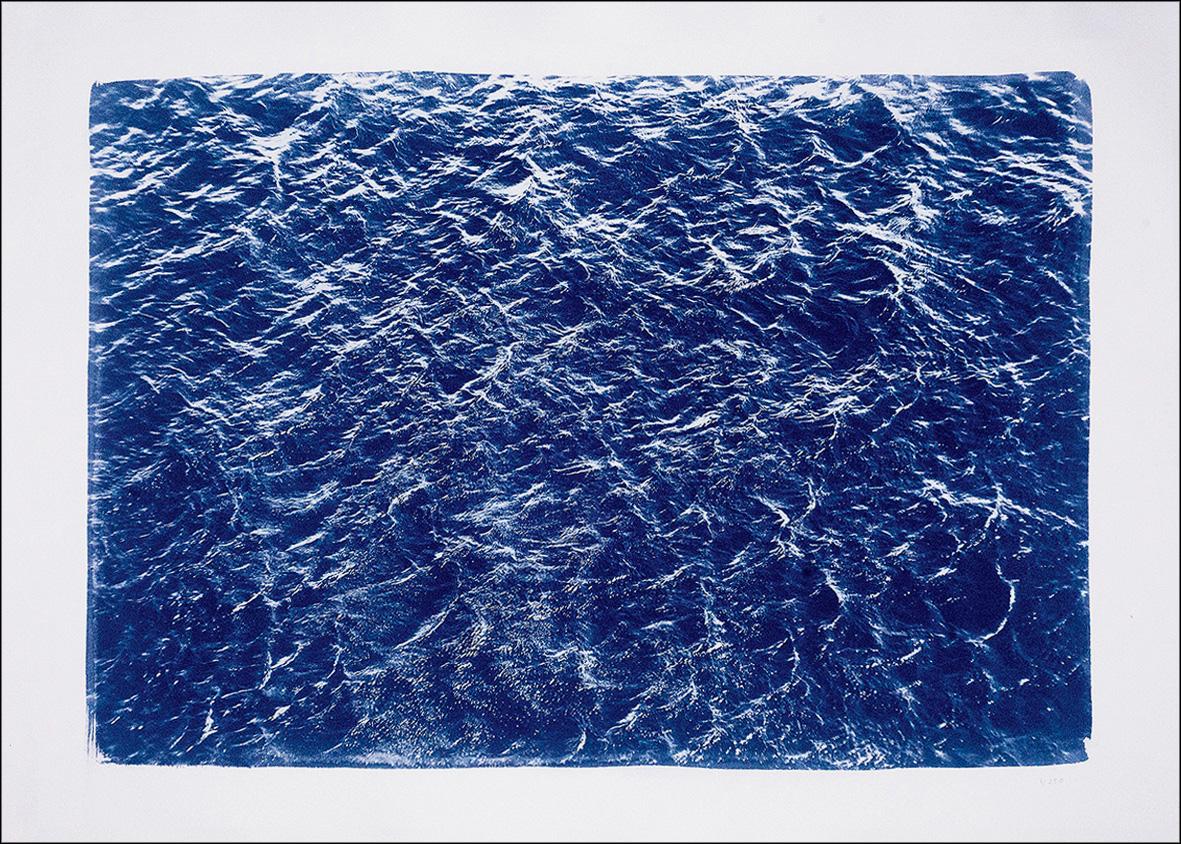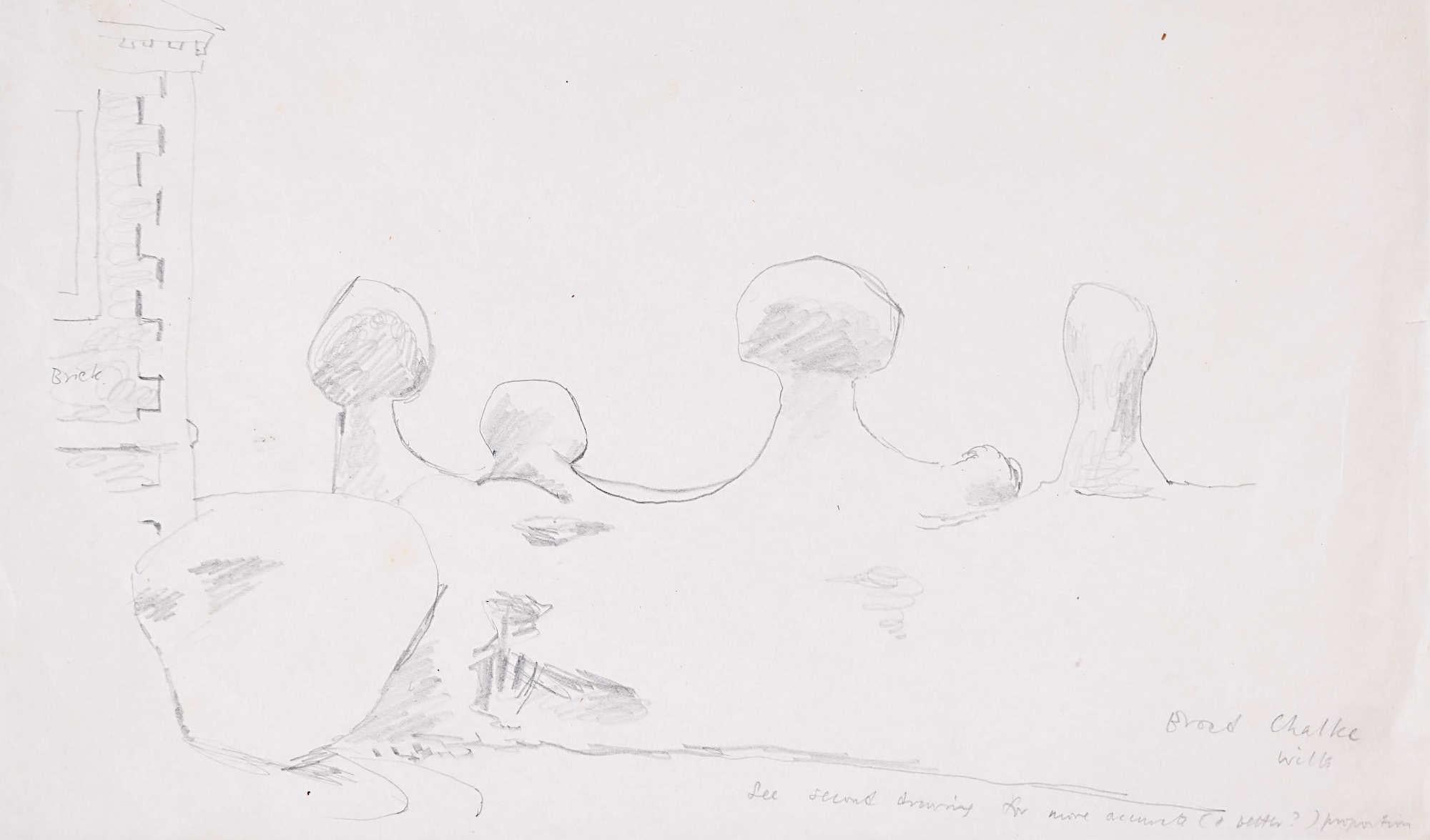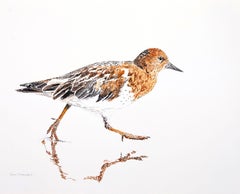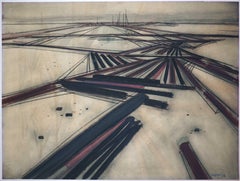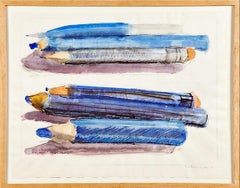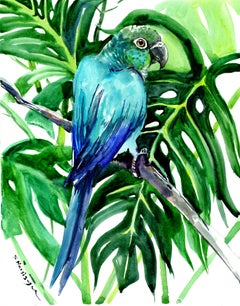
Green Conure and Philodendron, Tropical
View Similar Items
Suren NersisyanGreen Conure and Philodendron, Tropical2018
2018
About the Item
Artist Comments
Tropical bright green colors of a parrot with philodendron together look beautiful!
About the Artist
Suren is an impressionist painter eloquently capturing nature, landscapes, and cityscapes in paint. His body of work reflects several different stylistic approaches. Suren’s scenes in oil are inspired by Impressionist masters Monet and Van Gogh, while his watercolor series of flowers and birds are influenced by Eastern styles of painting and the colors of the Middle Eastern environment. Suren believes his role as an artist is to remind viewers that we all are part of the same natural universe.
Green Conure and Philodendron, Tropical
Suren Nersisyan
Watercolor painting on paper
Ready to frame
One-of-a-kind
Signed on front and back
2018
14 in. h x 11 in. w
1 lbs. 1 oz.
- Creator:
- Creation Year:2018
- Dimensions:Height: 14 in (35.56 cm)Width: 11 in (27.94 cm)Depth: 0.1 in (2.54 mm)
- Medium:
- Movement & Style:
- Period:
- Condition:Green Conure and Philodendron, Tropical. Suren Nersisyan. Watercolor painting on paper. Ready to frame. One-of-a-kind. Signed on front and back.
- Gallery Location:San Francisco, CA
- Reference Number:Seller: 621351stDibs: LU92213672542
- Mountain Reverie Series 5, Abstract PaintingLocated in San Francisco, CA
Artist Comments
Artist Siyuan Ma shares an ethereal outlook of a snowy mountain range with an abstract approach. After the rain, sunlight shines on the...Category21st Century and Contemporary Abstract Abstract Drawings and Watercolors
MaterialsWatercolor
- Black Turnstone #3By Emil MorhardtLocated in San Francisco, CA
Artist Comments
Black turnstones are small hyperactive solitary shorebirds that, on Leadbetter Beach in Santa Barbara where they can be found in abundance in early winter, ra...Category21st Century and Contemporary American Realist Abstract Drawings and Wat...
MaterialsWatercolor
- Black-Bellied Plover #9By Emil MorhardtLocated in San Francisco, CA
Artist Comments
Why is this bird with a clearly white breast so named? Because it's never in breeding plumage in Santa Barbara - I guess you have to go to the high Arctic to ...Category21st Century and Contemporary American Realist Abstract Drawings and Wat...
MaterialsWatercolor
- Mountain Reverie Series 11, Abstract PaintingLocated in San Francisco, CA
Artist Comments
A breathtaking panorama of mountains emerges from the mist in artist Siyuan Ma's piece. The abstract imagery takes the viewer into a dr...Category21st Century and Contemporary Abstract Abstract Drawings and Watercolors
MaterialsWatercolor
- Winter Scene I, Abstract PaintingBy Karin JohannessonLocated in San Francisco, CA
Artist Comments
Abstracted garden flowers in a cool palette of blues and pink, with a touch of warmth. "This piece is my interpretation of a wintery scene, evoking images of ...Category21st Century and Contemporary Abstract Abstract Drawings and Watercolors
MaterialsWatercolor
- Dark Blooms VII, Abstract PaintingBy Karin JohannessonLocated in San Francisco, CA
Artist Comments
A spring garden scene, done in a loose and spontaneous watercolor style. Bright hues of yellow, pink and purple splash about the green foliage. Part of Karin'...Category21st Century and Contemporary Abstract Abstract Drawings and Watercolors
MaterialsWatercolor
- Advertising design for Pye Records Cambridge gouache Mid Century WirelessLocated in London, GBBowens (British, fl. mid 20th Century) Cambridge: Centre of Scientific Research Pye Group Records Pye - Nixa - Mercury - Vanguard - EmArcy c. mid-late 1950s Haig Road in Cambridge, where Pye had their factory, was subsumed into Elizabeth Way and was a long way from King's College chapel. However that iconic building is used to illustrate the Cambridge connection. EmArcy Records is a jazz record...Category
Mid-20th Century Realist Abstract Drawings and Watercolors
MaterialsGouache
- Raft Landscape in Sweden / - Temporary structures -Located in Berlin, DEOtto Eglau (1917 Berlin - 1988 Kampen), Raft Landscape in Sweden, 1956. Watercolor and ink on paper, 45 x 60 cm, signed in his own hand lower right with "Eglau" and dated "[19]56". - somewhat darkened Exposé as PDF - Temporary structures - About the artwork A wide river landscape stretches out before us, its horizon line running across the upper part of the picture, creating the impression of enormous depth. The depth is further extended by the dark tree trunks, most of which spill into the picture, and at the same time rhythmized by their different positions. This sequence of movements gives the landscape a strong dynamic moment. Indeed, the landscape seems to be "fleeing" from beneath us. To keep the gaze on the foreground alone requires a real visual effort. By looking at the foreground, we have already arrived at the background. Therefore, we cannot speak of pictorial grounds in the classical sense. Rather, we are confronted with a structurally rhythmic continuum of space, the dynamics of which are further accelerated by the cut tree trunks in the foreground and the upright trunks in the background, which function as target marks. Since the narrow strip of sky has the same white tonality as the ice, this area also fits seamlessly into the spatial structure, so that a deserted "structural landscape" unfolds before us. The structure, however, is not - as in the case of Piet Mondrian - completely abstract and thus something that exists independently of itself, removed from the time of natural space. The structures that Otto Eglau discovered in nature remain bound to it, which is why they exhibit a temporality that corresponds to the 'course of things'. Even if they correspond to an architecture of nature brought to representation, the structures are not substantial, but contingent. Artistically uncovered, they present themselves to Eglau at the very moment he captures them. In nature itself, these structures will never be repeated in the same way. Panta rhei - everything flows, even if the flow of time is frozen by his artistic representation and the image, for all its dynamism, radiates calm at the same time. "The structures I put behind things, and the lines that hold my paintings, are signs of transient life. They are random like the trace a wave leaves in the sand, blurred like the border between sea and land, ephemeral like the life of a shell I hold in my hand." - Otto Eglau About the artist After his release from captivity in 1947, Otto Eglau studied at the Hochschule für Bildende Künste in Berlin. He was a student of Oskar Nerlinger, Max Kaus and Wolf Hoffmann. From 1953 he taught free drawing for architects at the Technical University of Berlin. In the years that followed, Eglau undertook numerous study trips that took him to Scandinavia, the Arab world, the Far East and even Macau. During these travels he cultivated the technique of watercolour, which allowed him to work quickly in the open air, while retaining a strong painterly quality. Scholarships enabled Eglau to stay in Japan from 1962 to 1963 and in Naples in 1970. From 1969 to 1976 Eglau was professor of etching at the International Summer Academy of Fine Arts in Salzburg. Between 1983 and 1988 Eglau worked simultaneously in his Berlin studio at Lietzensee, which had its own printing press, and in his studio in Kampen on the island of Sylt. Otto Eglau's work has been shown in more than 100 solo exhibitions worldwide and in more than 120 group exhibitions. "I love the vastness of the island. The mudflats off Kampen are my treasure trove; here I discover new shapes and colors every day. Without Sylt, I would be like a fish without water." - Otto Eglau Selected Bibliography Hanns Theodor Flemming: Otto Eglau. Das graphische Werk, Flensburg 1966. Heinrich Seemann (Einführung): Otto Eglau. Inselskizzen, Hamburg 1982. Heinrich Seemann (Einführung): Otto Eglau. Japan, Nepal, Sylt. Aquarelle. Zeichen und Strukturen. Einführung von Heinrich Seemann, Hamburg 1986. Otto Eglau: Watt-Tagebuch. Ausgewählte Aquarelle aus den Skizzenbüchern Otto Eglaus. Kampen 1996. GERMAN VERSION Otto Eglau (1917 Berlin – 1988 Kampen), Floßlandschaft in Schweden, 1956. Aquarell und Tusche auf Papier, 45 x 60 cm, unten rechts eigenhändig in Blei mit „Eglau“ signiert und mit „[19]56“ datiert. - etwas nachgedunkelt Exposé als PDF - Temporäre Strukturen - zum Werk Vor uns erstreckt sich eine weite Flusslandschaft, deren Horizontline im oberen Bereich des Bildes verläuft, wodurch der Eindruck einer enormen Tiefenerstreckung entsteht. Die Tiefe wird von den dunklen, zumeist ins Bild hineinfluchtenden Baumstämmen zusätzlich geweitet und – durch ihre verschiedenartigen Lagen – dabei zugleich rhythmisiert. Durch diese Bewegungsabfolge weist die Landschaft ein starkes dynamisches Moment auf. Und tatsächlich stellt sich der Eindruck ein, als ob die Landschaft unter uns ‚hinwegfluchten‘ würde. Den Blick einzig im Vordergrund zu halten, verlangt regelrecht eine visuelle Anstrengung. Auf den Vordergrund schauend sind wir bereits im Hintergrund angelangt. Daher kann gar nicht von Bildgründen im klassischen Sinne gesprochen werden. Vielmehr steht hier ein strukturell rhythmisiertes Raumkontinuum vor Augen, dessen Dynamik von den angeschnittenen Baumstämmen vorne und den als Zielmarken fungierenden aufgerichteten Stämmen hinten zusätzlich beschleunigt wird. Da der schmale Himmelstreifen dieselbe Weißtonalität wie die Wasserlandschaft aufweist, fügt sich auch dieser Bereich bruchlos in das Raumgefüge ein, so dass sich vor uns eine menschenleere ‚Strukturlandschaft‘ ausbreitet. Die Struktur ist aber nicht – wie dies bei Piet Mondrian der Fall ist – gänzlich abstrakt und dadurch etwas eigenständig für sich Bestehendes, das der Zeit des Naturraums enthoben ist. Die von Otto Eglau in der Natur entdecken Strukturen bleiben an diese zurückgebunden, weshalb sie eine dem ‚Lauf der Dinge‘ entsprechende Temporalität aufweisen. Auch wenn sie einer zur Darstellung gebrachten Architektur der Natur entsprechen, sind die Strukturen nichts Substanzielles, sondern kontingent. Künstlerisch aufgedeckt, bieten sie sich Eglau in eben jenem Moment dar, den er festhält. In der Natur selbst werden diese Strukturen niemals in derselben Art wiederkehren. Panta rhei – alles fließt, auch wenn sich der Fluss der Zeit durch seine künstlerische Darstellung verfestigt hat, wodurch das Bild – trotz aller Dynamik – zugleich auch Ruhe ausstrahlt. „Die Strukturen, die ich hinter die Dinge setze, und die Linien, die meine Bilder halten, sind Zeichen des vergänglichen Lebens. Sie sind zufällig wie die Spur, die eine Welle im Sand hinterlässt, unscharf wie die Grenze zwischen Meer und Land, vergänglich wie das Leben einer Muschel, die ich in der Hand halte.“ - Otto Eglau zum Künstler Nach seiner Entlassung aus der Kriegsgefangenschaft 1947 nahm Otto Eglau ein Studium an der Hochschule für Bildende Künste in Berlin auf. Dort war wer Schüler von Oskar Nerlinger, Max Kaus und Wolf Hoffmann. Ab 1953 unterrichtete er freies Zeichnen für Architekten an der Technischen Universität Berlin. In den Folgejahren unternahm Eglau zahlreiche Studienreisen, die ihn nach Skandinavien, in den arabischen Raum, nach Fernost und bis nach Macau führten. Auf diesen Fahrten kultivierte er die Technik des Aquarellierens, die eine zügige Bildschöpfung im Freiraum erlaubt und dennoch eine stark malerische Qualität aufweist. Stipendien ermöglichten es Eglau, sich von 1962 bis 1963 in Japan aufzuhalten und 1970 länger in Neapel zu verweilen. Von 1969 bis 1976 hatte Eglau die Professur für Radierung an der Internationalen Sommerakademie für Bildende Kunst in Salzburg inne. Zwischen 1983 und 1988 war Eglau parallel in seinem Berliner Atelier am...Category
1950s Realist Landscape Drawings and Watercolors
MaterialsWatercolor
$1,230 Sale Price20% Off - Untitled (Colored Pencils), unique painting, Allan Stone Collection & Sotheby'sBy Grace KnowltonLocated in New York, NYGrace Knowlton Untitled (Colored Pencils), 1978 Mixed media watercolor and charcoal painting on paper. (Framed with labels from the legendary Allan Stone Collection + Sotheby's label...Category
1970s Realist Figurative Drawings and Watercolors
MaterialsCharcoal, Watercolor, Mixed Media, Pencil
$10,000 Sale Price33% Off - Ruffled Kimono (Orange, Teal, and Purple)By Patricia A. PearceLocated in Soquel, CADelicate kimono by Patricia A. Pearce (American, b. 1948). This piece has an iridescent quality to the coloration. This piece is unsigned, but was acquired with a collection of other...Category
1980s Realist Abstract Drawings and Watercolors
MaterialsPaper, Pen, Color Pencil, Gouache
$700 Sale Price20% Off - Small town. Red-blue mood. 2020. Watercolor, paper, 60, 5 x 71, 5 cmBy Zigmunds SnoreLocated in Riga, LVSmall town. Red-blue mood. 2020. Watercolor, paper, 60,5 x 71,5 cm Zigmunds Šņore was born in 1942 in Latvia. His works has been exhibited since 1969 and are held in private collec...Category
2010s Realist Abstract Drawings and Watercolors
MaterialsPaper, Watercolor
- Galveston House Architectural Landscape ViewBy Herb RatherLocated in Houston, TXRealistic watercolor painting of a house in Galveston, Texas. The work is signed by the artist in the bottom corner. It is framed in a black frame with a white matte. Dimensions with...Category
21st Century and Contemporary Realist Landscape Drawings and Watercolors
MaterialsWatercolor



